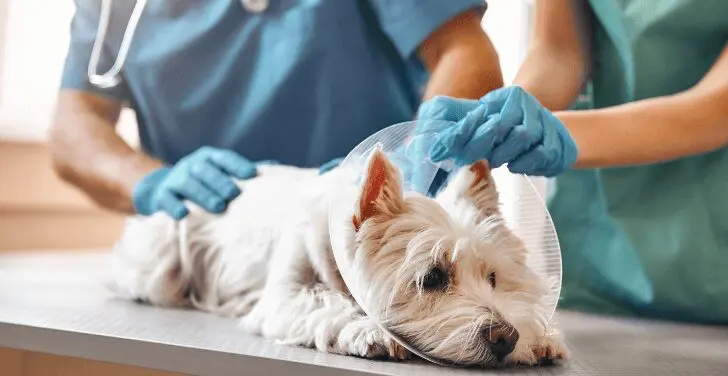What do football and dogs have in common? Knee injuries.
The pro athletes we watch on TV every weekend aren’t the only ones who get knee injuries.  Nor are they exclusive to weekend warriors. More than 200,000 dogs suffer a ruptured cranial cruciate ligament (CCL) – the canine equivalent of a torn ACL – every year.
Nor are they exclusive to weekend warriors. More than 200,000 dogs suffer a ruptured cranial cruciate ligament (CCL) – the canine equivalent of a torn ACL – every year.
Belle’s story.
Take Belle: She’s a young, active golden retriever who loves to swim, go on walks with her owners, and pal around with her canine friends. But, when she was just a year old, she tore her CCL. She was chasing after a ball in the house, and in her exuberance, slid into the wall at an odd angle. She let out one yelp and limped over to a rug to rest. Within a few days she seemed back to normal.
Belle continued to go on walks, but often after long hikes she would lay around the house more than usual. “She also stopped jumping on the couch, even when we gave her permission to join us,” her owner Ely Yakley explains. The turning point came on a hot summer day after Belle had spent hours swimming and jumping in and out of the pool. By evening, she couldn’t bear weight on her right rear leg.
Ms. Yakley took Belle to her family veterinarian in the morning who diagnosed a possible torn cruciate and made a referral to one of our board-certified veterinary surgeons.

Belle visits BluePearl.
Alan Cross, a surgeon, confirmed the diagnosis. In humans, the anterior cruciate ligament (ACL) helps hold the knee in place. In canines, it is the cranial cruciate ligament (CCL) that performs the same job. Although occasionally it is a traumatic injury, or a sudden twisting motion of the dog’s rear legs that leads to a rupture or tear, in most dogs it is due to a degenerative process.
“The typical patient has had a three month or more history of occasional lameness,” explains Dr. Cross. “During this time, the cranial cruciate ligament is fraying, resulting in inflammation and pain. Once it tears completely, the knee is unstable and quite painful resulting in an obvious lameness.”
Treatment options.
Treatment options are either conservative management, which includes activity restriction, anti-inflammatory medications and pain management therapies, or surgery. “Some dogs will improve without surgery, but in my experience they never will do as well as they do with surgery,” Dr. Cross reports.
If left untreated, meniscal tears can develop (menisci are the cartilages that provide load sharing function in the knee) as well as severe arthritis. However, according to Dr. Cross, “Most dogs return to excellent functioning following surgery.”
Get expert advice.
Many factors like the dog’s age, size, behavior and expected activity level are taken into consideration when determining the best treatment for a torn CCL. It’s important to weigh the options with the expert advice of your family veterinarian and a veterinary surgeon.
Belle’s owners decided that the tibial plateau leveling osteotomy (TPLO) surgery, considered the gold standard for CCL repair – would be best for her. After her surgery, Belle’s owners also opted for her to receive physical rehabilitation (the equivalent of physical therapy in human medicine) which is recommended to achieve the best results. During rehabilitation sessions, pet owners learn exercises, techniques and lifestyle changes that help their dogs recover more quickly from surgery and can be used throughout their lives to keep them at optimum health.
Belle is more active than ever.
Three months after her surgery, Belle was running and jumping again. “She was actually more active than she’d ever been in her life. Here we thought we just had a calm dog, but what we didn’t realize was that she had knee problems,” says Ms. Yakley. “In hindsight, I realized that Belle was really good at hiding her pain. My only regret was that I didn’t realize earlier that something was wrong.”



